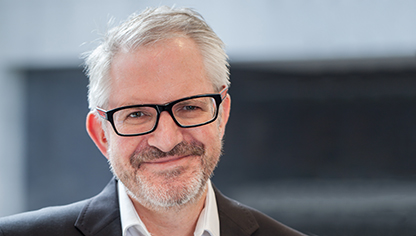The combination of the pandemic and a decade of weak growth has left the Government’s debt to GDP ratio at all-time highs - an unprecedented 14% of GDP, or a borrowing requirement of up to R700bn - and little room to work with. What’s more, there are limits to what fiscal policy can do in the short term to address the problems posed by the pandemic and as such, one has to raise the question of sustainable government finances in a post-pandemic world. This was the discussion between Prof Andrew Donaldson, former Deputy Director General of National Treasury and Investec Treasury Economist Tertia Jacobs, as they spoke about the ‘Road to Economic Recovery'.
“We didn't really gain impetus in economic growth sufficiently after the recession a decade ago which saw big structural challenges, the need to accelerate employment creation to expand investment in the economy and to build living standards that are sustainable, through municipal investment and housing investment. Those challenges are still with us,” says Donaldson.
“To get the economy moving again in the second half of the year, and into next year, we're going to have to address the short term challenges of an economy that is under shock, no profits, a big hit on employment fiscal revenues and we're going to have to accelerate progress on the kinds of structural change that the economy needs to achieve longer term sustainable growth.”
Fiscal vs monetary policy
Fiscal policy takes time, since it relies on investment and for projects to roll out. However monetary policy is much quicker and there is a lot that can be done in a year. However, what Government really needs is for longer-term rates to fall.
“The Reserve Bank has acted to lower rates at the short end which if fed through into the wider economy has an economic benefit of around R100 bn – which is quite substantial. However, it does little for government finances. It’s the capital market rates and the long-dated bond rates that really count. As such, there’s a need to get the cost of funding down - an important precondition to the sustainability of our public finances - and to re-open the capital markets for the private sector for sustainable long-term growth gains.”
Jacobs agrees indicating that output may only reach its previous levels in 2023. So, in terms of getting the capital market inflows in to bring down longer rates, the big question is where is growth likely to come from?
“What is needed are projects that are “shovel ready” and that can effectively “crowd in” the private sector,” she says.
However, policy certainty is needed for this to happen. “We want to try and create an environment and a policy framework that encourages growth but to do so, we have to address these very substantial budget data-sets, and at the same time, re-look policies. If there is certainty, and an increase in confidence, the slope of the yield curve could flatten. However, we really need to see a growth trajectory and the removal of uncertainty about policy.”
There are also discussions around the domestic savings pool and how Government could look to potentially tap into this. Referring to possible changes to Regulation 28 of the Pension Funds Act, to access funding for fiscal policy, Donaldson said he wasn’t concerned about South Africa’s financial architecture, which he felt was not a constraint on growth as projects get put on the table.
“It's the project development and investment decision making side of the equation. That is where the decisions have to be taken, where the action is urgently needed. There is no reason to prescribe investment in a certain direction. If projects make sense, capital will find a way. But we need to think proactively about those parts of the economy, particularly investments in township development, upgrading in municipal infrastructure associated with improved living standards, as a top priority for the period ahead.”
“There are very substantial reforms of public finances that are needed, and progress needs to be made on key aspects that will take us over the next three to five years into a position of lower government deficits, shifts in the balance between private sector activities and what government takes responsibility for that are sustainable and that can absorb the rising numbers of work seekers who for so long, have faced difficult labour market conditions.”
Donaldson also pointed to the fact that it’s not about public vs. private sector anymore, it’s about a blend of the two approaches. Similarly, on the financing side. Banks and financial institutions have the resources to bring the finance into the housing and industrial investment but that needs to be complemented by subsidies in some areas. It doesn’t have to be a choice between government or business.
Government revenue implications
The state of government finances will become clearer with the release of the supplementary Budget on 24 June. Donaldson said that there’s a broad consensus that in these times, steeper taxes to meet government’s spending requirement may not be appropriate, apart perhaps from taxes on tobacco and alcohol.
Similarly, when it comes to wealth taxes, he noted that foreign investors might be disinclined to bring capital into South Africa where such taxes exist. “It boils down to having to get growth going, and increase future revenues that way,” he said.
Jacobs agreed, adding that one area that needed to be looked at in managing government finances is the public sector wage bill, as well as substantial support provided to SOE’s, which has been a major driver of the rising Budget deficit over the last few years. Donaldson added that in this context, wage negotiations needed to look beyond just this year’s agreement, but towards moderating expectations over the medium term.
Looking at the positives
Donaldson added that there could be some support for the economy in the form of pent-up demand as the economy opened up and we move through the lockdown levels. “We may be pleasantly surprised by the buoyancy of the consumer,” he said.
A critical factor will also be the extent to which Eskom has managed to catch up on its maintenance work to ensure more reliability of supply. So will be the introduction of independent power suppliers and renewable sources of power.
“If we are able to move into a less constrained electricity environment, that makes it easier for business to introduce new projects,” he added.
Donaldson said there has been a lot of engagement between government and other stakeholders and he is encouraged by the initiatives but in the end, what is needed is government leadership.
“We are not going to get to a realignment of business investments, to the reopening of global trade or to the regulatory changes we need without government action and without an engagement between government and business and finding the right balance between what government does and what the private sector does. We need to recognise the depth of the challenges we face, and it cannot just be talk. It needs to be action. It needs to be decisions,” concludes Jacobs.
About the author

Patrick Lawlor
Editor
Patrick writes and edits content for Investec Wealth & Investment, and Corporate and Institutional Banking, including editing the Daily View, Monthly View, and One Magazine - an online publication for Investec's Wealth clients. Patrick was a financial journalist for many years for publications such as Financial Mail, Finweek, and Business Report. He holds a BA and a PDM (Bus.Admin.) both from Wits University.
Get Focus insights straight to your inbox




